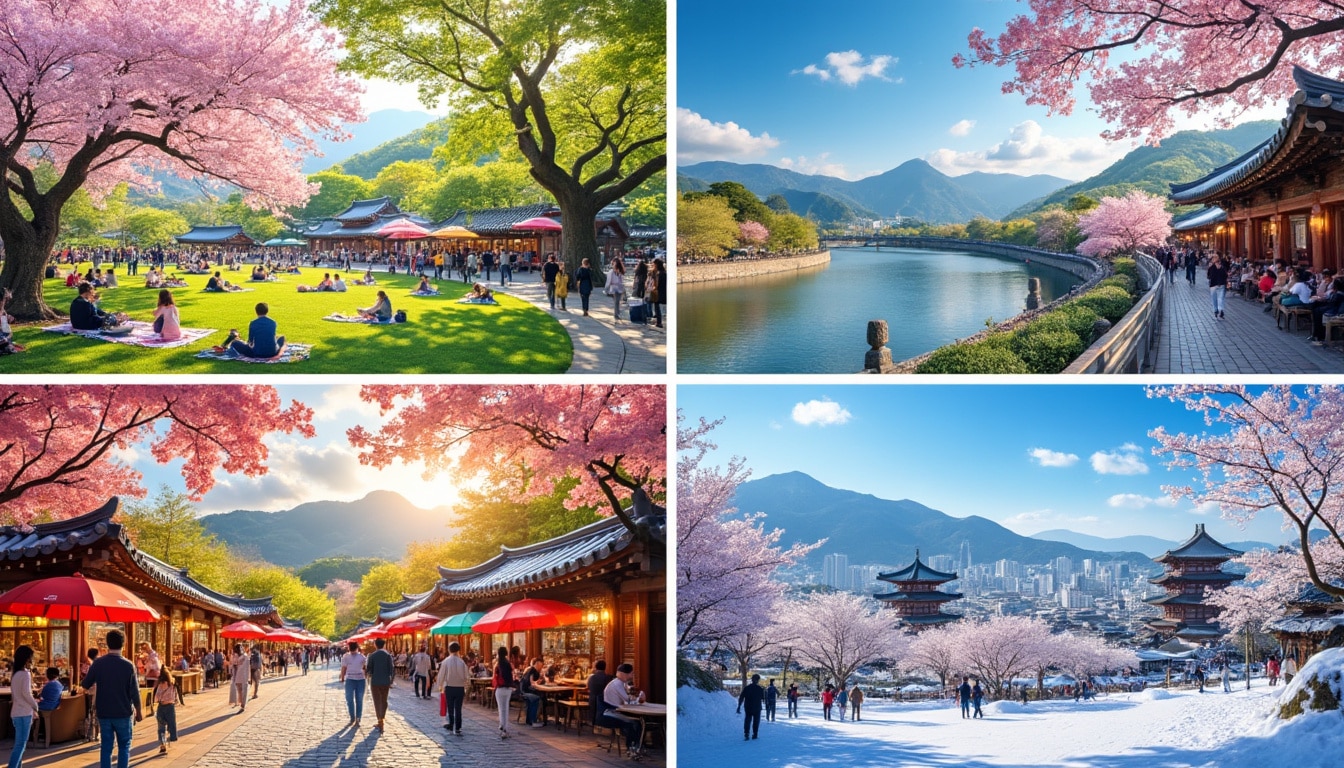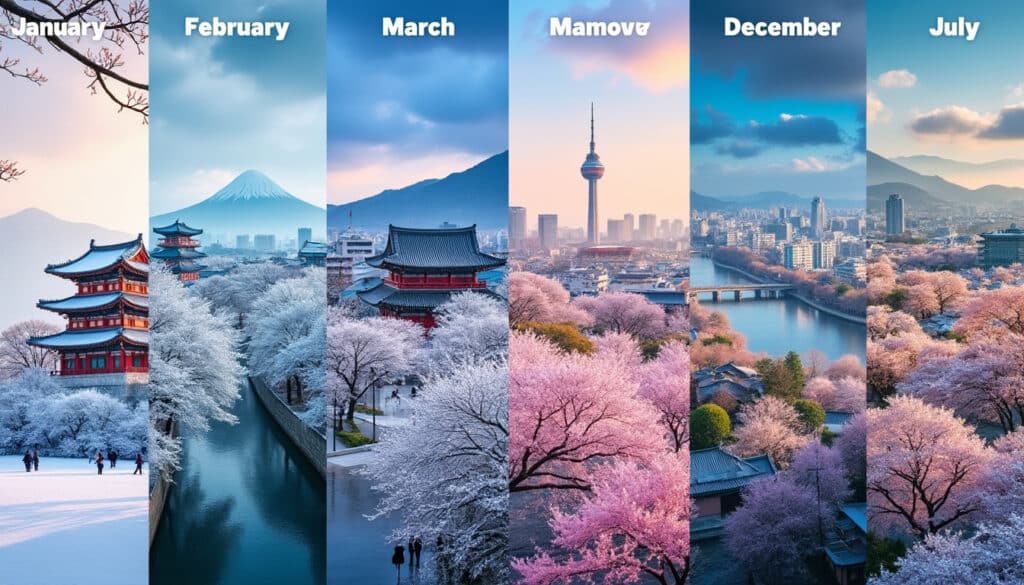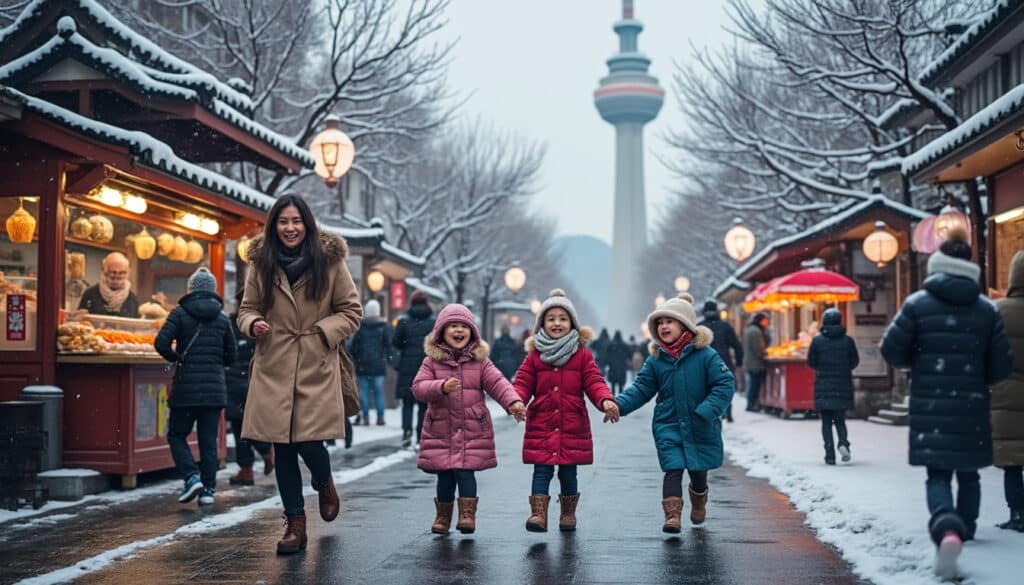Seoul, the vibrant heart of South Korea, is a city that never sleeps. With its bustling streets and a culture that blends the traditional with the ultra-modern, it offers an experience for every kind of traveler. One of Seoul’s most charming attributes is its distinct and dynamic seasons, each painting the city in different hues and offering unique experiences. From the *delicate blossoms of spring* to the *snow-dusted landscapes of winter*, the capital’s climate invites residents and travelers alike to partake in the dance of nature. Understanding each season’s nuances not only enriches one’s visit but also provides insight into the daily rhythms that shape the lives of Seoulites.
Spring Blossoms: Seoul’s Awakening
Spring in Seoul, spanning from March to May, is arguably the city’s most picturesque season, marked by a gentle thaw from the cold of winter. The cityscape is transformed into a soft pastel wonderland as cherry blossoms and a variety of spring flowers like azaleas and chrysanthemums bloom. The air takes on a refreshing crispness, making outdoor activities particularly enjoyable.
The iconic cherry blossom festival in Yeouido Park is a signature event attracting locals and tourists alike. The park, often compared to ‘Seoul’s Manhattan’, turns into a sea of pink and white, offering a visual feast that has been celebrated by countless artists and poets over the centuries. Couples, families, and photographers flock here, eager to capture the transient beauty.
Springtime in Seoul is also the perfect season for festivals. The Seoul Marathon in March welcomes around 35,000 runners of all levels, aiming to conquer the city streets under the mild sun. This event embodies the energetic spirit of Seoul, with its routes passing by some of the most iconic landmarks in the city.
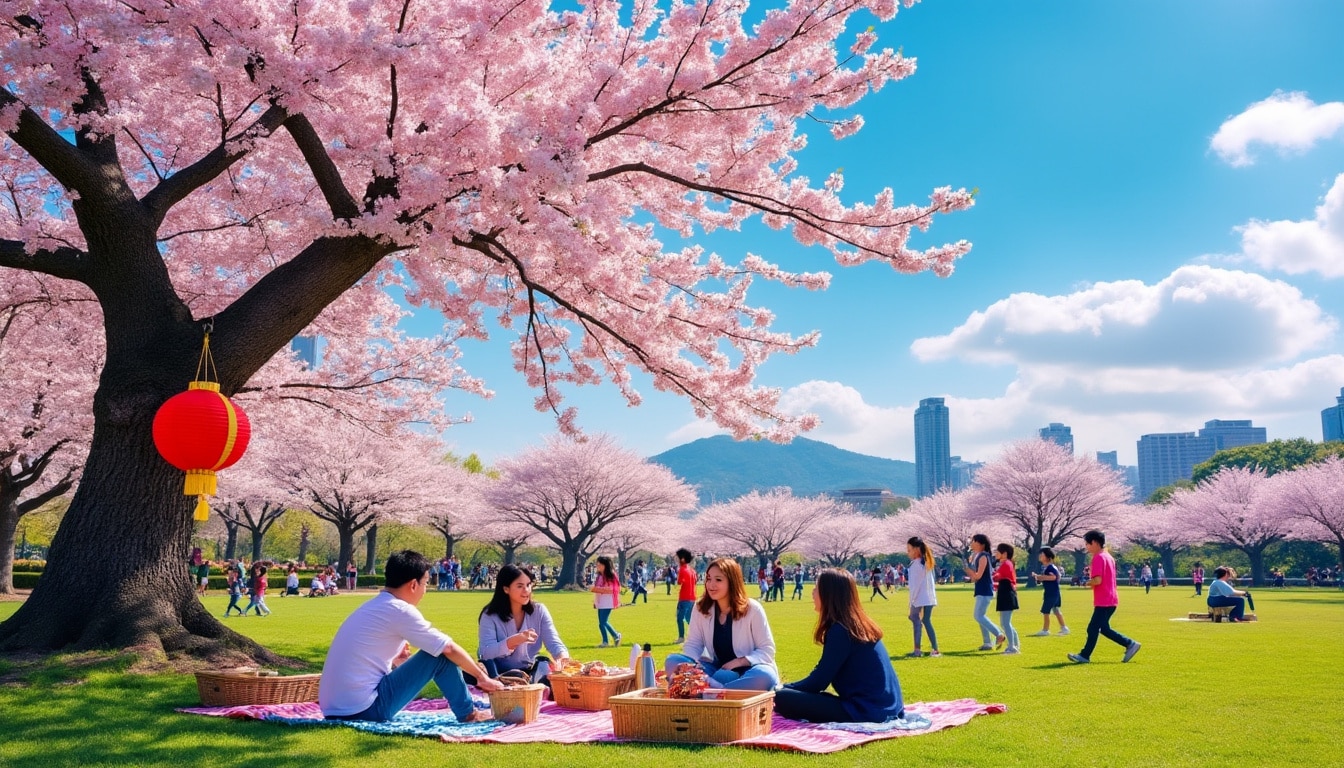
For those looking to explore beyond the city, the clear skies and mild temperatures make hiking in Seoul’s surrounding mountains an attractive option. Popular spots include Bukhansan National Park, where hikers can enjoy both the challenge of the climb and the reward of spectacular panoramic views over the city and its blooming splendor.
- 🌸 Cherry Blossoms at Yeouido Park
- 🏃♂️ Seoul Marathon in March
- ⛰️ Hiking at Bukhansan National Park
- 🚴♀️ Cycling along the Han River
The seasonal cuisine during spring also has its highlights. The markets are rich with fresh produce, leading to traditional dishes that reflect the renewal of the season. This is the time when Korean street food stalls offer vibrant and delicious dishes made from the freshest ingredients of the year.
The ever-changing skies of spring mean there might occasionally be sand storms from the Gobi Desert. However, these are few and far between and don’t deter the vibrancy of the season or its allure.
Cultural Celebrations of Spring
Spring is integral to Korean culture, as it signifies renewal and new beginnings. The traditions associated with this season reflect an appreciation for the simple beauty of the natural world. Festivals and celebrations during this time often include traditional Korean music performances and vibrant dance displays, augmenting the charm of the season.
In essence, spring in Seoul is a period of beauty, activity, and cultural appreciation. Whether you are visiting for the aesthetic marvels or the rich cultural tapestry, this season is bound to leave a lasting impression.
Summer Vibes: Seoul’s Energetic Atmosphere
Summer in Seoul, from June to August, is marked by a distinctive energetic vibrancy. Despite the challenging *temperatures and humidity*—which frequently exceed 30 degrees Celsius—this is a season filled with life and bustling activity. The city pulses with the rhythm of summer, inviting locals and tourists to explore its varied attractions.
The summer rain, also known as *jangma*, arrives mid-June, bringing with it a moist and verdant freshness. This rain is not overwhelming but enough to keep the city’s parks and gardens lush and vivid. Activities such as biking and inline skating along the Han River become particularly appealing after a refreshing shower, as the air feels cleaner and the landscapes more vibrant.
Seoul thrives with events and festivals during summer. The Hangang Summer Festival is a highlight, where the riverbanks come alive with cultural performances, dance displays, and night markets. The vibrant scene offers an array of local foods, arts, and crafts, creating an atmosphere that is both festive and soothing.
For those inclined to enjoy indoor pursuits, Seoul offers an abundance of options. Escape the heat by exploring the COEX Mall, the largest underground shopping mall in Asia, complete with an aquarium, library, and even a casino. Seoul’s quirky cafe culture also offers a respite; themed cafes—ranging from animal cafes to VR experiences—provide unique experiences to beat the heat.
- ☀️ Hangang Summer Festival
- 🏊♀️ Swimming and water sports
- 🏢 Exploring COEX Mall
- 🍹 Rooftop bars and cafes
Seoul’s summer cuisine complements the vibrant atmosphere. Cold noodle dishes such as Naengmyeon become a staple, providing a refreshing contrast to the warm weather. Street vendors offer ice-cold treats like Bingsu, a shaved ice dessert topped with fruit and sweet syrups, perfect for cooling off.
Fashion in Seoul during summer is as dynamic as the season itself. The streets are filled with vivid colors and trendy outfits reflecting the latest in local and international fashion. Areas like Myeongdong and Hongdae showcase a fusion of styles, serving as a hotspot for fashion enthusiasts to explore and draw inspiration.
A beautifully chaotic blend of heat, festivities, and cultural wealth, summer in Seoul offers a lively and unforgettable experience. The challenging weather just adds to the character of this vibrant season, making the memories crafted here even more poignant.
Autumn Leaves: Seoul’s Palette of Colors
Seoul experiences a breathtaking transformation when autumn rolls in from September to November. Often considered by residents and visitors alike as the most beautiful season, autumn hues the city in golden yellows, fiery reds, and deep oranges. This riot of color spreads from the tree-lined streets to the lush hillsides, making this season a vibrant contrast to the preceding summer.
The pleasant, crisp weather makes it an excellent period for outdoor exploration. Parks and gardens, such as those surrounding Seoul’s five grand palaces, become particularly enchanting as the foliage transitions into its autumnal tapestry. Amidst this natural beauty, events such as the Chuseok holiday celebrate the harvest season, steeped in tradition and rich cultural practices.
Chuseok is akin to an American Thanksgiving, a time for families to get together and pay respect to their ancestors. It’s a cultural celebration intertwined with gratitude and abundant feasting, offering rich insights into Korean customs and traditions.
- 🍂 Strolling through palace gardens
- 🍁 Visiting Namsan Park for foliage views
- 🌾 Joining Chuseok harvest celebrations
- ✨ Experiencing the Seoul Lantern Festival
Another major draw in autumn is the Seoul Lantern Festival. Held in November along the Cheonggyecheon Stream, this event lights up the city with luminous paper lanterns and LED sculptures, drawing thousands to witness its breathtaking displays.
Outdoor Activities and Allure
Autumn in Seoul is also a fantastic time to enjoy outdoor activities. The cooling temperatures are perfect for hiking trips in trails that offer splendid views of the changing seasons. With the trees painting a splendid backdrop, the city’s mountains provide a close and brief escape from the bustling urban life.
Korean traditional markets also reflect the season with autumnal produce and traditional seasonal foods like songpyeon—rice cakes steamed with pine needles. These markets are a delightful representation of Korean culture, providing both locals and tourists an authentic taste of Seoul’s seasonal offerings.
The combination of cultural heritage, natural beauty, and festive atmosphere solidifies autumn as an ideal season to visit Seoul. As the leaves fall, they remind visitors and residents alike of the quiet elegance found in nature’s cycles and Korean traditions.
Winter Wonderland: Seoul’s Enchanting Cold
For those who embrace the cold, winter in Seoul, from December to February, offers a unique and magical experience. The city, often blanketed in snow, transforms into a stunning winter wonderland. Despite the Siberian cold fronts that can dip temperatures to below -10 degrees Celsius, winter in Seoul is a time of warmth, mostly thanks to its festive spirit and traditional celebrations.
Seoul’s landscapes change dramatically when snowflakes dust the palaces and parks. This time of year is quieter, with fewer tourists, making it an excellent opportunity to explore the city at a slower pace. Visitors can enjoy the tranquility of Seoul’s historical sites, adorned with a serene white blanket that adds a layer of majesty to their structures.
The Korean New Year, Seollal, is one of the most important traditional holidays during this season. Celebrated between late January and mid-February, it includes family gatherings, ancestral rites, and folk plays. The local festivities offer a fascinating window into the Korean way of life and are often accompanied by traditional performances and delicious feasts.
- ❄️ Skiing and snowboarding in nearby resorts
- 🔥 Traditional saunas (jjimjilbangs) and spas
- 🌨️ Snow-themed festivals and light displays
- 🍲 Warming up with hotteok (sweet pancakes)
For adventure seekers, winter sports are readily available with venues for skiing, snowboarding, and even ice fishing easily accessible. Just outside the city, numerous ski resorts offer not just thrilling rides but also magnificent views of Korean winter landscapes.
Indoor Warmth and Seasonal Comforts
Winter in Seoul does not mean being restricted indoors, but when it is time to head inside, there is plenty of warmth and comfort to be found. Traditional Korean saunas, known as jjimjilbangs, offer a place for relaxation and rejuvenation. It’s a unique aspect of Korean culture, where people unwind in hot tubs, saunas, and on heated floors.
Culinary experiences are also essential during winter. Seasonal treats such as gyeran-bbang (egg bread) and bungeo-ppang (fish-shaped buns filled with sweet red bean paste) can be enjoyed piping hot from street vendors, each bite providing warmth against the chill.
Winter in Seoul is a cherished time, brimming with cultural significance and simple joys. From the snow-kissed streets to the warm glow of lantern-lit alleys, it’s a magical season to visit, offering a glimpse into the serene yet vibrant life in South Korea’s capital.
FAQ
| Question ❓ | Answer ✅ |
|---|---|
| When is the best time to visit Seoul for good weather? | The best time for pleasant weather is in spring (March-May) or autumn (September-November). |
| What should I pack for a winter trip to Seoul? | Download jackets, thermal wear, and warm accessories like hats and gloves are essential. |
| Are there special festivals during summer? | Yes, the Hangang Summer Festival is a highlight with numerous events and activities by the river. |
| Is it crowded in Seoul during the cherry blossom season? | Yes, both locals and tourists flock to popular spots like Yeouido Park for cherry blossom viewing. |
Seoul’s seasons offer a tapestry of experiences, each vibrant and distinctive, enhancing the city’s magnetic charm. Whether you’re drawn by the blossoming beauty of spring or the cozy allure of winter, Seoul invites you to discover its wonders year-round.
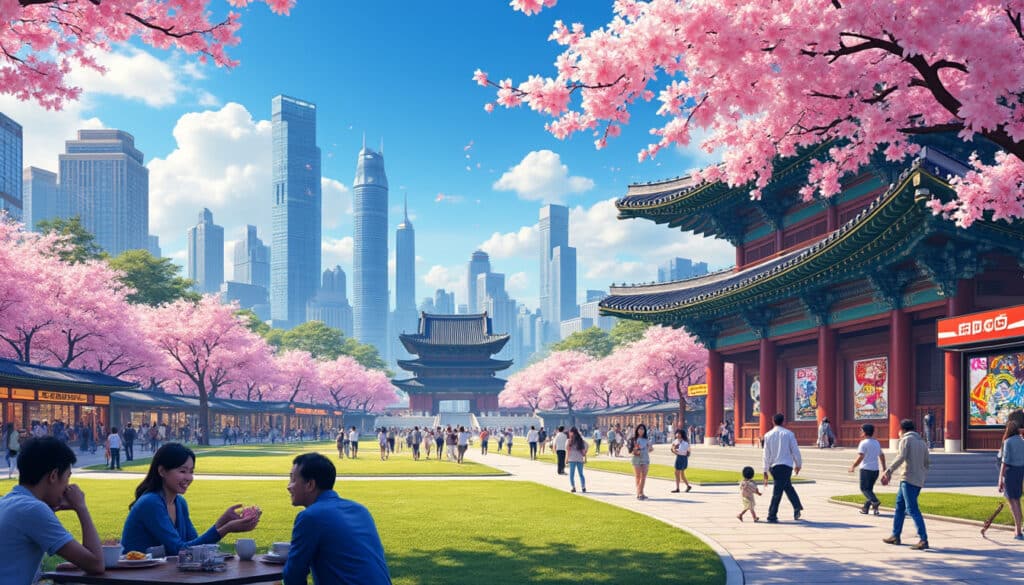
Seoul, the bustling heart of South Korea, boasts a climate as vibrant and varied as its cultural landscape. Visitors and residents alike are treated to four distinct seasons, each bringing its own flavor to the city. From the icy chills…
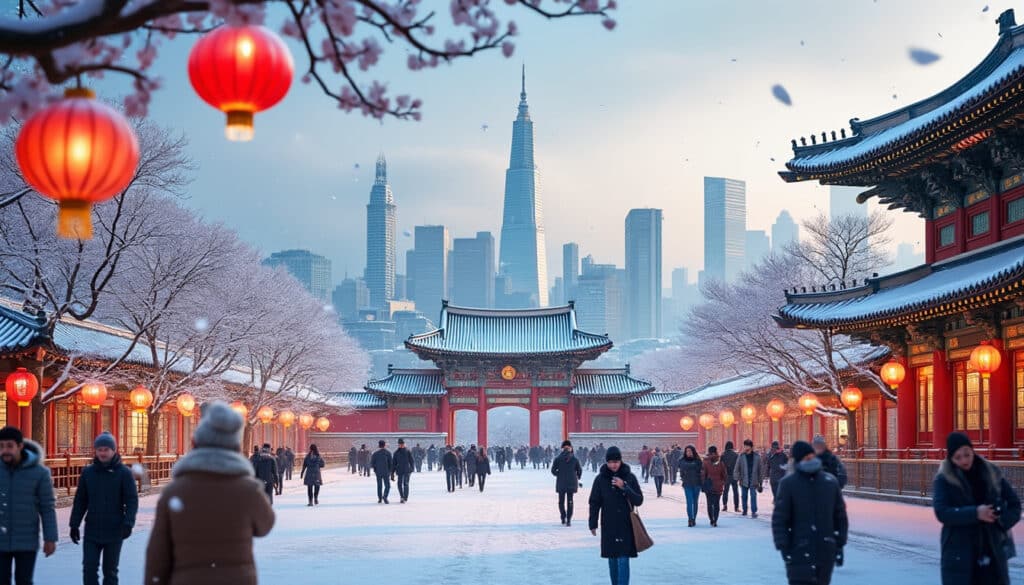
When imagining Seoul in winter, visions of snow-dusted palaces, serene parks, and bustling streets adorned in festive decorations might come to mind. But does it truly snow in Seoul? While South Korea’s capital city does experience winter weather, it doesn’t…
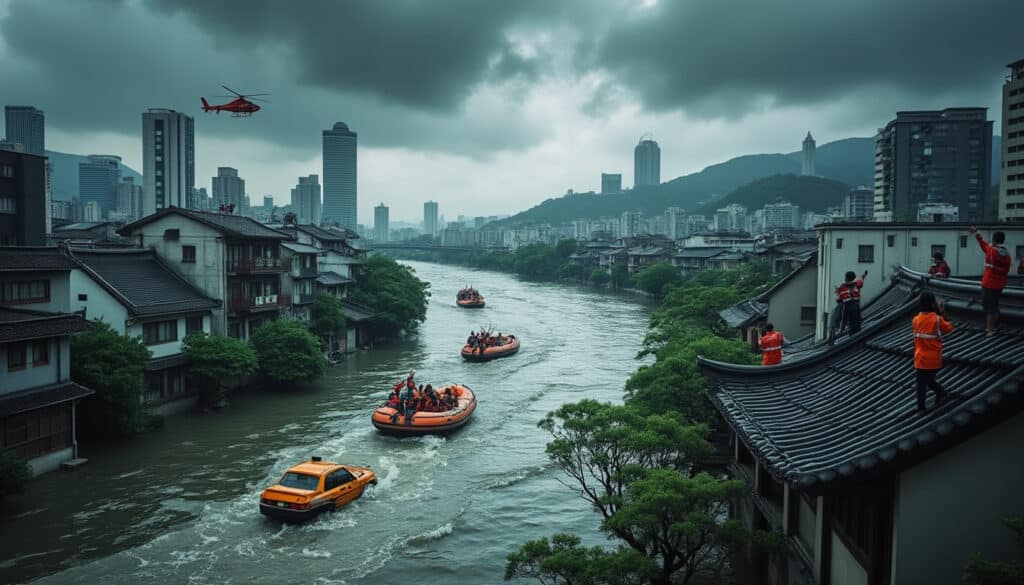
Flooding and natural risks in Seoul
Seoul, the bustling heart of Korea, is not without its challenges. As the city juggles rapid urbanization and meteoric technological advances, it also faces the formidable threats of flooding and other natural risks. Dubbed as one of the “Mega Cities”,…
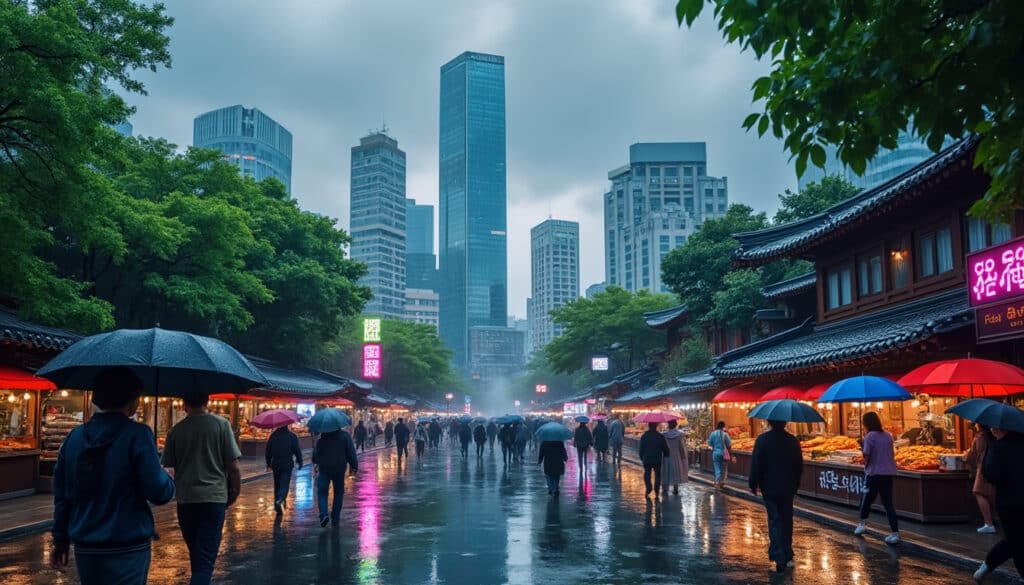
When one thinks of Seoul, the vibrant capital of South Korea, they might envision bustling streets, cutting-edge technology, and a rich blend of modern and traditional culture. However, nestled within these urban delights is a lesser-discussed yet crucial aspect: the…
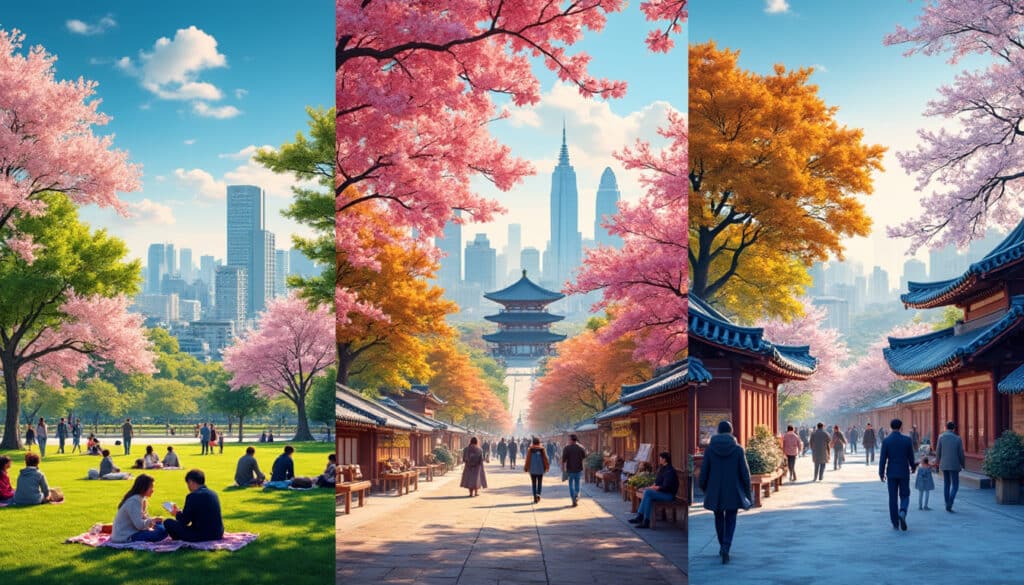
Is Seoul warm throughout the year?
Seoul, the dynamic capital of South Korea, is known for its rich culture and vibrant cityscape. Yet, it also presents a diverse climate that varies significantly across the year. Understanding Seoul’s weather patterns is essential for prospective travelers, businesses like…
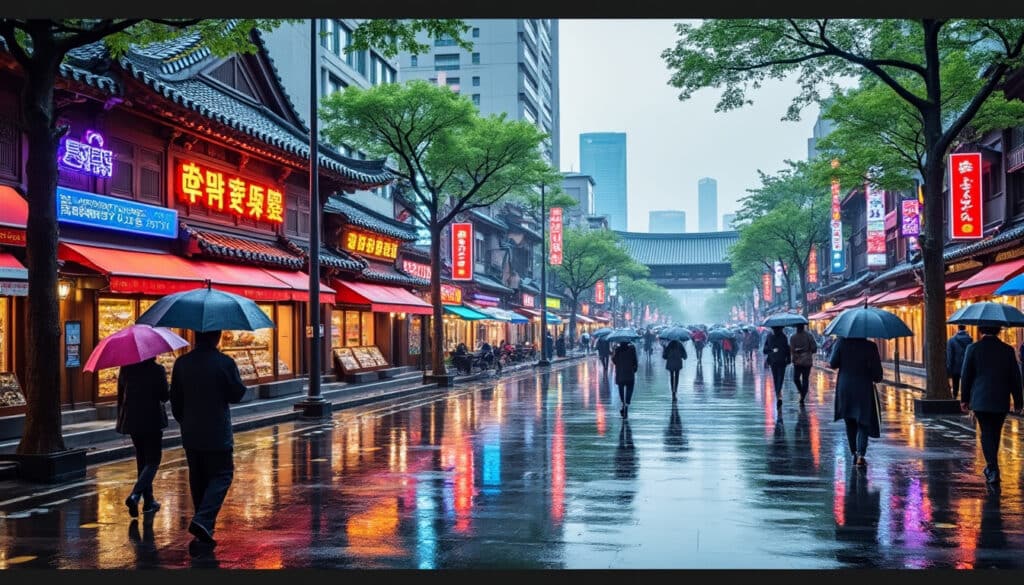
Rain and precipitation in Seoul
Seoul, the bustling heart of South Korea, is a city that experiences a wide array of weather patterns throughout the year. Its unique climate is characterized by hot, humid summers and cold, dry winters, influenced by its geographical location and…

Seoul, the vibrant capital of South Korea, presents a captivating blend of ancient traditions and bustling modernity. In this city where time seems to stand still and rush forward simultaneously, experiencing the beginning of a new day at sunrise is…
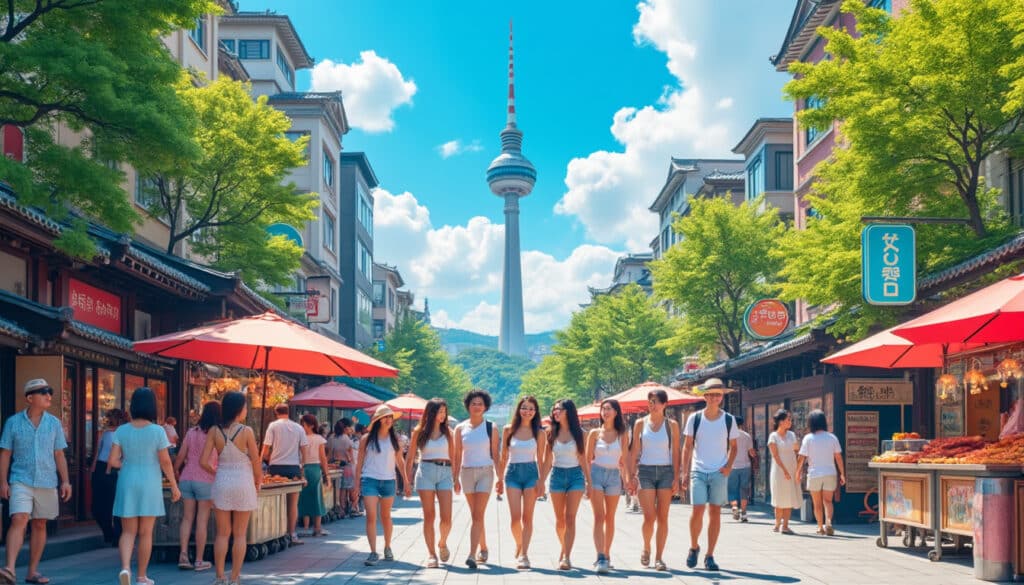
As the vibrant cityscape of Seoul continues to captivate travelers and residents alike, understanding its temperature trends becomes essential for planning visits and daily activities. The city, known for its unique blend of tradition and modernity, offers a distinct climate…
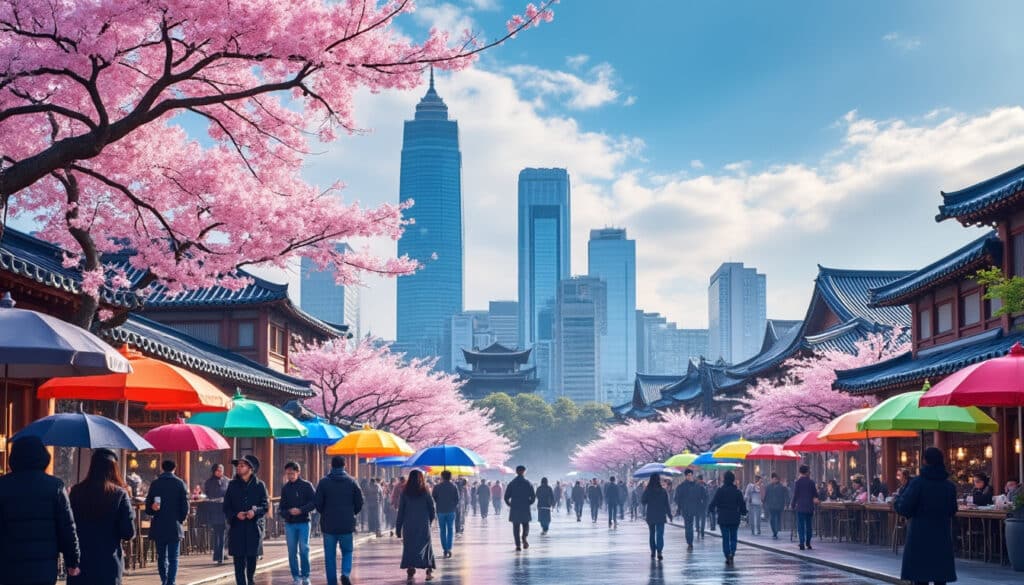
What is the weather like in Seoul?
Seoul, a bustling metropolis with a perfect blend of ancient traditions and modern innovations, often leaves its visitors and residents curious about its weather patterns. While the city is famous for its historic palaces, cutting-edge technology, and mouth-watering cuisine, understanding…
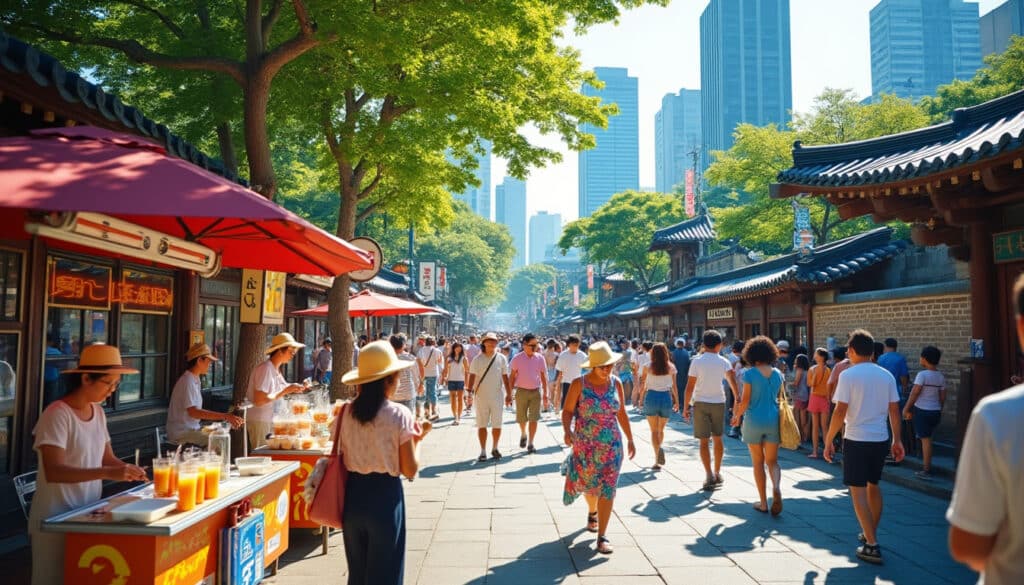
Seoul, a vibrant city known for its mix of traditional culture and modern innovation, transforms under the blazing summer sun. With its hot and humid climate, Seoul during summer is a true testament to the concept of endurance and adaptation.…

